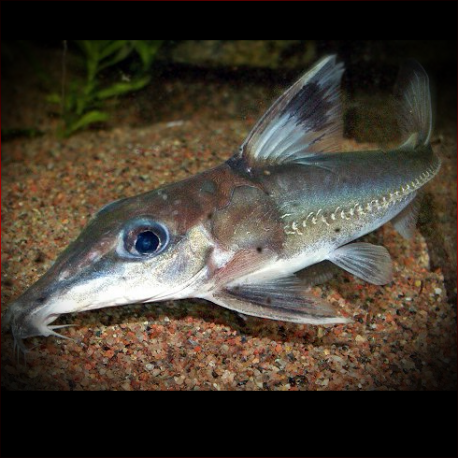More info
Datasheet
| Minimum Tank Size | 140 litres / 36.98 US gallons |
| Maximum Size | 18.0cm / 7.09inches |
| Temperature | 22°C / 71.60°F - 27°C / 80.60°F |
| Hardness | 5-20ºdH |
| pH | 6.0-7.5 |
General Description
The Black-Top Mouse Catfish, scientifically known as Hassar Orestis, is a fish species that can be delicate when first imported but usually becomes hardy once settled in an aquarium. Belonging to the Doradidae family and reaching a maximum size of around 18.0cm, they are recognized for their shy and retiring nature, requiring ample cover and dim lighting in their tank. The species is identifiable by its features and is capable of producing audible sounds through distinct mechanisms.
Aquarium Setup
For optimal care, a tank size of at least 140 litres is recommended, with the inclusion of thick plant thickets for cover. Black-Top Mouse Catfish appear to prefer hiding in plants rather than wood or rocks and benefit from dim lighting. Maintaining excellent filtration and ensuring proper water conditions within a pH range of 6.0-7.5, hardness of 5-20 degrees dH, and a temperature of 22-27 degrees Celsius is crucial due to their sensitivity.
Behaviour
Despite its non-predatory nature and safe compatibility with most fish, the species can intimidate small bottom dwellers due to its size. They are known to shoal and thrive in groups of at least three specimens, displaying more confidence when in the company of others. Black-Top Mouse Catfish can be louder than expected, producing sounds through unique methods, with caution advised during netting due to the spines on their pectoral fins.
Feeding and Diet
Newly imported Black-Top Mouse Catfish might initially be finicky eaters, preferring small foods such as bloodworms, Daphnia, or granulated dried varieties. Once acclimated to aquarium life, they become less selective and more confident, actively swimming during feeding times and readily accepting a broader diet.
Reproduction & Dimorphism
Details regarding the reproduction of Hassar Orestis are currently unrecorded. Sexual dimorphism is observable, where males possess an elongated first dorsal ray, while females exhibit more rounded pectoral fins. These distinctions aid in identifying the gender differences within the species.
Habitat and Distribution
Inhabiting slow-moving and standing waters like tributaries, swamps, and coastal mangroves, these catfish are commonly found seeking shelter among roots or submerged vegetation. Their distribution spans various regions in northern South America, including countries such as Ecuador, Colombia, Venezuela, Guyana, Peru, and Brazil.

